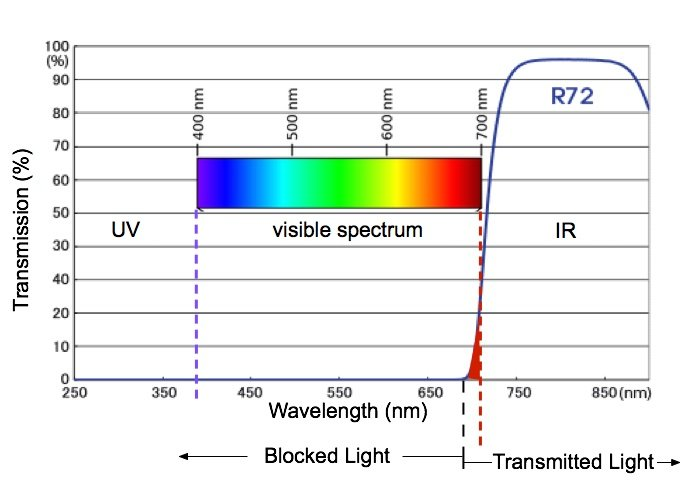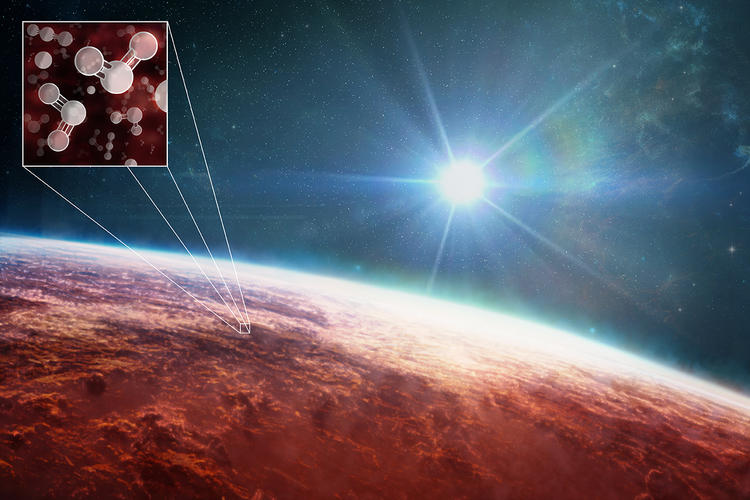Scientists utilizing NASA's James Webb Space Telescope might have identified air gases encompassing 55 Cancri e, a hot rough exoplanet 41 light-years from Earth. This is the best proof to date for the presence of any rough planet air outside our nearby planet group.
Renyu Hu from NASA's Stream Impetus Research facility (JPL) in Pasadena, California, is lead creator on a paper distributed today in Nature. "Webb is pushing the wildernesses of exoplanet portrayal to rough planets," Hu said. "It is genuinely empowering another sort of science.
Super-Hot Super-Earth 55 Cancri E
55 Cancri e (picture beneath, subtleties/download), otherwise called Janssen, is one of five known planets circling the Sun-like star 55 Cancri, in the heavenly body Disease.

With a breadth almost two times that of Earth and thickness somewhat more prominent, the planet is named a super-Earth: bigger than Earth, more modest than Neptune, and probable comparative in organization to the rough planets in our planetary group.
To depict 55 Cancri e as "rough," be that as it may, could have some unacceptable impression. The planet circles so near its star (around 1.4 million miles, or one-twenty-fifth the distance among Mercury and the Sun) that its surface is probably going to be liquid - a gurgling sea of magma.
With such a tight circle, the planet is likewise liable to be tidally locked, with a dayside that faces the star consistently and a nightside in unending dimness.
Regardless of various perceptions since it was found to travel in 2011, whether 55 Cancri e has an air - or even might have one given its high temperature and the persistent surge of heavenly radiation and wind from its star - has gone unanswered.
I've dealt with this planet for over 10 years," said Diana Dragomir, an exoplanet scientist at the College of New Mexico and co-creator on the review. "It's been truly disappointing that none of the perceptions we've been getting have heartily settled these secrets. I'm excited that we're at last finding a few solutions!
Dissimilar to the airs of gas monster planets, which are generally simple to recognize (the first was distinguished by NASA's Hubble Space Telescope over twenty years prior), more slender and denser environments encompassing rough planets have stayed subtle.
Past investigations of 55 Cancri e utilizing information from NASA's presently resigned Spitzer Space Telescope proposed the presence of a significant climate wealthy in volatiles (particles that happen in gas structure on The planet) like oxygen, nitrogen, and carbon dioxide.
Yet, specialists couldn't preclude another chance: that the planet is exposed, save for a questionable cover of disintegrated rock, wealthy in components like silicon, iron, aluminum, and calcium. The planet is hot to the point that a portion of the liquid stone ought to dissipate, made sense of Hu.
Super-Earth Exoplanet 55 Cancri e (Artist’s Concept)
This craftsman's idea shows what the exoplanet 55 Cancri e could seem to be founded on perceptions from NASA's James Webb Space Telescope and different observatories.

Perceptions from Webb's NIRCam and MIRI recommend that the planet might be encircled by an environment wealthy in carbon dioxide (CO2) or carbon monoxide (CO). Scientists figure the gases that make up the climate might have risen out of an expanse of magma that is remembered to cover the planet's surface.
Measuring Subtle Variations in Infrared Colors
To recognize the two prospects, the group utilized Webb's NIRCam (Close Infrared Camera) and MIRI (Mid-Infrared Instrument) to gauge 4-to 12-micron infrared light coming from the planet.
In spite of the fact that Webb can't catch an immediate picture of 55 Cancri e, it can gauge unpretentious changes in light from the framework as the planet circles the star.

By taking away the brilliance during the optional obscuration (picture beneath, subtleties/download), when the planet is behind the star (starlight just), from the splendor when the planet is right alongside the star (light from the star and planet joined), the group had the option to ascertain how much different frequencies of infrared light coming from the dayside of the planet.
This technique, known as optional overshadowing spectroscopy, is like that utilized by other exploration groups to look for airs on other rough exoplanets, similar to TRAPPIST-1 b.
Super-Earth Exoplanet 55 Cancri e (MIRI Secondary Eclipse Light Curve)
A light bend of 7.5-to 11.8-micron light caught by NASA's James Webb Space Telescope's MIRI (Mid-Infrared Instrument) in Walk 2023 shows the diminishing in splendor of the 55 Cancri framework as the rough planet 55 Cancri e moves behind the star, a peculiarity known as an optional overshadowing.

How much mid-infrared light radiated by the planet (the distinction in splendor between the star-and-planet joined and the star all alone) shows that the planet's dayside temperature is around 2,800 degrees Fahrenheit.
This temperature, which is low contrasted with a comparative planet with no environment, shows that intensity is being dispersed from the dayside to the nightside of the planet, perhaps by an unpredictable rich climate.
Cooler than Expected
The primary sign that 55 Cancri e might have a significant air came from temperature estimations in view of its warm outflow (picture underneath, subtleties/download), or heat energy radiated as infrared light.
On the off chance that the planet is canvassed in dull liquid stone with a slender cloak of disintegrated rock or no air by any means, the dayside ought to be around 4,000 degrees Fahrenheit (~2,200 degrees Celsius).

All things being equal, the MIRI information showed a generally low temperature of around 2,800 degrees Fahrenheit [~1540 degrees Celsius]," said Hu.
This is an exceptionally impressive sign that energy is being circulated from the dayside to the nightside, doubtlessly by an unstable rich air." While flows of magma can heft some intensity around to the nightside, they can't move it proficiently enough to make sense of the cooling impact.
At the point when the group took a gander at the NIRCam information, they saw designs reliable with an unpredictable rich air. "We see proof of a dunk in the range somewhere in the range of 4 and 5 microns less of this light is arriving at the telescope," made sense of co-creator Aaron Bello-Arufe, likewise from NASA JPL.
This recommends the presence of an air holding back carbon monoxide or carbon dioxide, which retain these frequencies of light." A planet with no air or a climate comprising just of disintegrated rock wouldn't have this particular ghostly component.
We've gone through the most recent decade displaying various situations, attempting to envision what this world could resemble," said co-creator Yamila Miguel from the Leiden Observatory and the Netherlands Organization for Space Exploration (SRON). "At last getting some affirmation of our work is beyond value!
Super-Earth Exoplanet 55 Cancri e (NIRCam + MIRI Emission Spectrum)
A warm outflow range of the super-Earth exoplanet 55 Cancri e, caught by NASA's James Webb Space Telescope's NIRCam (Close Infrared Camera) GRISM Spectrometer (F444W) and MIRI (Mid-Infrared Instrument) Low-Goal Spectrometer.

Shows that the planet might be encircled by a climate wealthy in carbon dioxide or carbon monoxide and different volatiles, not simply disintegrated rock.
Bubbling Magma Ocean
The group imagines that the gases covering 55 Cancri e would be rising out from the inside, instead of being available since the planet shaped. "The essential climate would be a distant memory in light of the great temperature and serious radiation from the star," said Bello-Arufe.
This would be an optional climate that is ceaselessly recharged by the magma sea. Magma isn't simply precious stones and fluid stone; there's a great deal of disintegrated gas in it, as well.

While 55 Cancri e is unreasonably hot to be livable, scientists figure it could give a one of a kind window to concentrating on collaborations between climates, surfaces, and insides of rough planets, and maybe give bits of knowledge into the early states of Earth, Venus, and Mars, which are remembered to have been canvassed in magma seas far previously.
At last, we need to comprehend what conditions make it feasible for a rough planet to support a gas-rich climate: a critical element for a tenable planet," said Hu.

